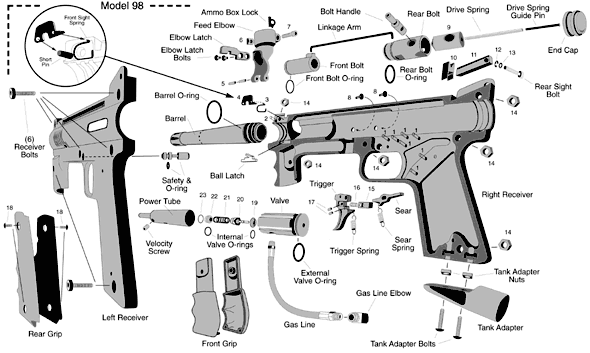Firing a paintball
As you fire the trigger, the paintball is being pushed down the barrel of the marker by the difference in pressure between the CO2 from a tank attached to the marker which builds up behind the ball and the air in front of the ball. There are several other forces which act on the paintball besides the air resistance and the CO2. One is the friction of the ball against the barrel. This frictional force is in no way constant because the shape and the smoothness of the inside of the barrel is not always constant. Likewise, the surface of the paintball is not always smooth. A second force is A spinning force that the C02 imparts on the ball causing a rotational acceleration and also a rolling motion.

Once the ball has cleared the barrel there is a significant change in the forces that are acting on the paintball. The imbalance of the pressure behind the ball is gone. So that there is no longer any force pushing the ball in the direction that the muzzle is pointing in.

It should be noted that there are many different ways that are employed to get a marker to shoot a paintball out of the marker. Nearly every brand of marker has a different firing system. All have several things in common. They all have some sort of tank with compressed air or C02 or Nitrogen. Then they usually have sort of bolt and hammer system which is cocked back and held in place by a sear which compresses a spring. When the trigger is pulled it releases the sear. The restoring force of the spring pushes the bolt and the hammer forward starting the paintball moving then the C02 is released propelling the ball outward.
Main Page -- Paintball Flight -- Paintball Range -- Bibliography